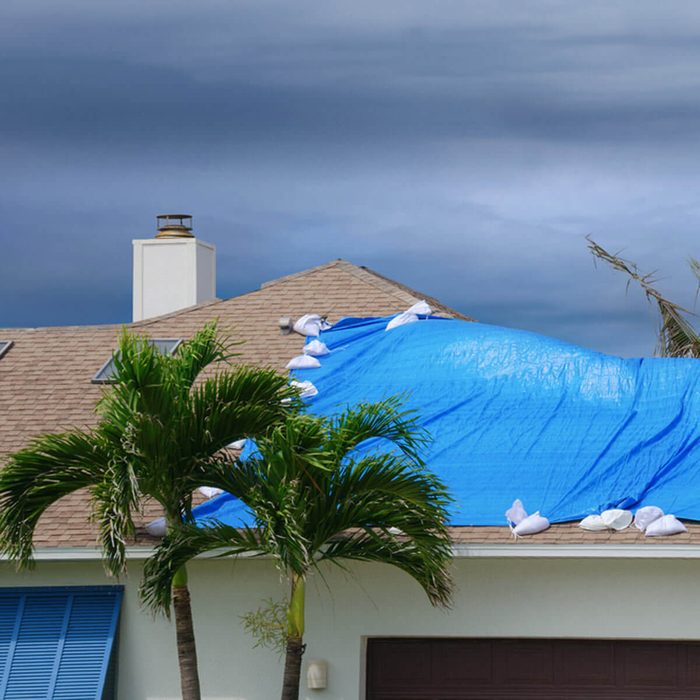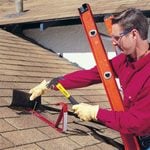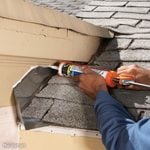How to Install and When to Replace Roof Tarps

Roof tarps are only temporary solutions, so make sure you install them properly and don't leave them on past their usefulness.
If you live in an area battered by a hurricane, tornado, high winds or other extreme weather events, it’s likely that you’ve seen tarps covering up damaged roofs. But a roof tarp does not last forever; it’s a temporary solution until you can repair or replace the roof on your house. If you’re relying on one to protect your home, it might be well past its time to be replaced, or else you could end up with even more problems from a damaged roof. Here’s what you need to know.
On This Page
Why Use a Roof Tarp
Roof tarps are a quick solution to cover a damaged part of a roof. Whether the roof’s damage is caused by a storm or wear over time, a roof tarp will adequately stave off further problems until a more permanent solution is in place. Depending on the severity, you might need a complete roof replacement.
How to Tarp a Roof
After assessing and measuring the area the tarp needs to cover, purchase a roof tarp that will give several feet of coverage beyond the damaged area. You can weigh down your tarp with 2×4 wooden planks or sand bags that attach to loops along the edge of the tarp. Next, attach roof nails to the tarp and press/hammer firmly into uncompromised areas of the roof.
The tarp should be stretched tight, without slack, to prevent wind from getting under the tarp and blowing it off. For thicker, long-term tarps, put screws through 2x4s into the roof for a more secure option.
Use the same safety precautions and gear you normally would when going on a roof, paying extra attention to any slick or compromised areas. Stay off of it when it’s windy or raining, and keep clear of the damaged part. The last thing you want is to damage the roof further or hurt yourself.
When to Replace a Roof Tarp
Typically, a cheap blue roof tarp will be effective for up to 90 days. That number will vary greatly depending on the volume of rainfall, any debris that falls on the tarp, and more. A thicker, long-term installation tarp can last a year or two if needed but should be inspected regularly.
Once the tarp incurs tears of more than a few inches, or begins to fade, it has probably outlived its time and should be replaced. Roof tarps are only meant to be a temporary solution, so continuously switching in new tarps is not the best bet and should be avoided if possible.


